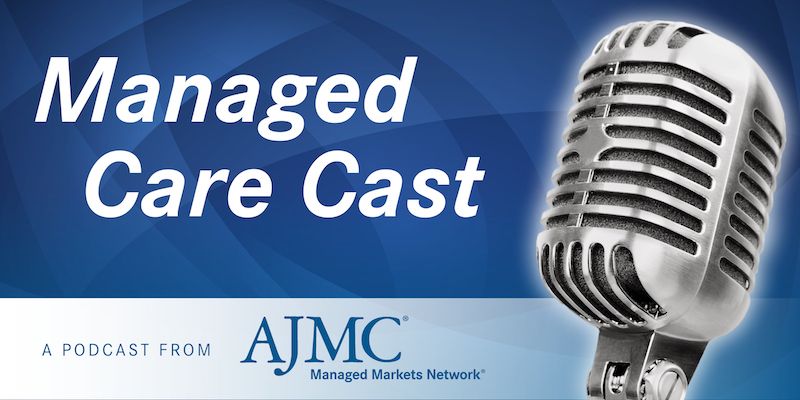Video
Historical Perspective on Preventive Care
A retrospective analysis of preventive care and how advancements have allowed for more effective management of migraine.
Transcript:
Neil Minkoff, MD: I wanted to ask, Dr Nahas, if you could speak to some of those older medications? We’ve talked about different points in the time that we’ve been together. We’ve talked about antiepileptics and β-blockers. We talked about antidepressants, and now onabotulinum toxin A has entered the conversation. Could you talk a bit about those agents and what has been done more traditionally before these newer medications came out for migraine prevention?
Stephanie J. Nahas, MD, MSEd, FAHS, FAAN: Sure. The 3 top categories are the antiseizure, blood pressure, and antidepressant medications. Those are largely what we used. We did not use every medication in those classes, and only a few are FDA-approved. But if we take them 1 by 1, the antiepileptic medications that are FDA-approved are topiramate and divalproex sodium. The evidence for other anticonvulsant medications is much weaker, although we may use some of them off label from time to time. For the antihypertensive class, 2 β-blockers are FDA-approved. There are a number of other β-blockers that may have some utility in migraine, and we’ll use a couple of them off label in certain circumstances.
None of the antidepressants are FDA-approved for migraine, but traditionally, we’ve used the older tricyclic agents. They have more [adverse] effects than some of the newer agents like the selective serotonin reuptake inhibitors, or the serotonin and norepinephrine reuptake inhibitors. The latter are more useful in chronic pain conditions, and there are 1 or 2 of them that we’ll use fairly commonly. But with all of them, we have to start at a low dose and build it up slowly. This is part of that waiting game to see if this medicine is going to be right for this individual.
One of the reasons to start at a low dose is that many people with migraine will say that they’re more sensitive than other people to just about everything. That includes things in the environment, how foods may affect them, and especially medications. I have a lot of patients who will say, “I can’t even read the [adverse] effects on the drug label because I know that’s going to prime me to get those and 12 more.” They’ve learned they don’t even want to know, and any time they try something, it has to be at a baby dose at first. This is what we generally recommend.
Envision what your target dose is and start with about 10% to 25% of that target dose. Escalate it gradually, with at least several days, or even up to 2 weeks, in between steps. That patient then has the opportunity to ease it into their system. They see if they’re going to be able to tolerate it, and then we have to wait for several more weeks to see if it’s going to work. It can be very frustrating. This is part of laying the groundwork of proper expectations. If you pick 1 family of these drugs, start with it, and don’t have success, you generally move onto a different family. Don’t keep trying anticonvulsant after anticonvulsant or antihypertensive medication after antihypertensive medication. Mix it up a bit. Our brains are different.
Some brains like oranges, some brains prefer grapefruits. Some brains prefer pineapples or apples. We’re just trying to find the right match. Onabotulinum toxin A, in particular, is only indicated for people with chronic migraine, who have at least 15 headache days per month. Typically, we’ll have to demonstrate that we’ve tried some of these older oral drugs first. You can waste a year of a person’s life with migraine before you come upon the drug that’s going to work for them, especially if the drug that you have in mind is one of our modern precision tools against migraine. That’s a long time to wait when someone could get relief with one of those drugs within a week.
But to have to wait 9 months to even get there is unfortunate. During that time, the disease itself can destabilize further because migraine is very dynamic and a lot of things can affect it. It’s a sad state of affairs. I’m really hopeful that we’ll move beyond this and start to consider these newer therapies, which are as yet costly, out of reach, and perhaps not recommendable as first-line agents. But the day will come, and I hope it comes sooner rather than later that we can stop borrowing medications and putting Band-Aids on and give definitive therapy to our patients who deserve it.
Neil Minkoff, MD: Dr Stephens, let me pivot from that and ask you a question. You’re thinking about your population and migrating from acute therapies to some of these medicines, whether or not we’re talking about the older ones. We’re going to delve into some of the newer ones next. What’s the threshold at which your organization is saying, “This person is using too much acute medicine,” or, “They’re going to the emergency department too much?” and you are pushing them in that preventive direction?
Kevin Stephens, Sr., MD: I have a statement that I always make. Emergency department visits represent a failure in the outpatient management. We try to reduce the emergency department visits to zero. That’s how I think. Particularly in migraine, if we have good outpatient management, we’re hoping that patients won’t need to go to the emergency department. The emergency department doctor doesn’t have many more tools available. The biggest thing that they do is rule out other things, such as aneurysms and strokes.
In your migraine diagnosis, that’s overutilization. Our goal is to be much more aggressive in the outpatient preventive and proactive setting, because we know that when you go to the emergency department, the cost escalates with even 1 CT scan. You have patients who your mentioned prior who they have 8 or 10 episodes a month. That could be very costly, and many times, patients go from one emergency department to the next. They don’t get treatment there, so they go somewhere else. The emergency department there doesn’t have access to the CT scan from the first visit. They order another CT scan and all these other laboratory tests, and it can be very problematic. We really like to be very proactive in this.
Neil Minkoff, MD: Dr Nahas was talking about trying to shorten the duration between when a patient initiates treatment and when they might be considered for one of the newer therapies and move toward them.
Newsletter
Stay ahead of policy, cost, and value—subscribe to AJMC for expert insights at the intersection of clinical care and health economics.




